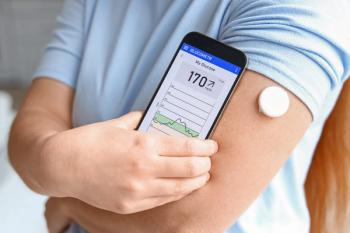
- Drug Topics January 2018
- Volume 162
- Issue 1
The First Billion-Dollar Drug
Explaining the high price of a drug to a customer is hard enough, but its worse when its your mother.
The year was 1978, and this young student pharmacist volunteered to go the drug store in my hometown of St. Marys, PA, to run an errand. My Mom handed me a $20 bill, and I told her I’d probably need another $10 to pick up the prescription. She said, “I sure hope not!”
My grandfather, who was in his mid-80’s at the time, had a prescription sent to the pharmacy by his family doctor. I remember Grandpa telling me stories of having his stomach ulcers being cut out, as that is how they treated them back then. Old Doc Shannon did the surgery, and Grandpa had the distinction of being the first patient in the local hospital to get an IV. They flew up about six bottles of IV fluid from Pittsburgh to the local airport and my Uncle Mike picked them up. Grandpa almost died, with eight kids at home, with the youngest being eight years old. Doc Shannon started the IV, and handed off the glass bottle to Uncle Mike. After all the hospital didn’t have an IV pole! Within hours Grandpa started improving, and fully recovered.
The introduction of potent acid suppressing drugs virtually eliminated the general surgeon’s bread and butter: the gastrectomy.
I energetically walked in the St. Marys Pharmacy, and waved to Gene McBride, who was one of the staff pharmacists. Gene wrote my reference letter for Pitt’s Pharmacy School. The clerk retrieved Grandpa’s prescription from the pickup bins, and told me it was $27.00! The prescription was for Tagamet (cimetidine), which had been released the previous year in 1977.
I believe this moment was a turning point for me as a student, trying to explain to Mom why this amazing drug might cost so much. This single moment also made me realize that patients are much more concerned about the costs of medicines than side effects and drug interactions. I never imagined I’d spend the rest of my career trying to explain costs, copays, deductibles, and the “donut hole.”
Tagamet was the first billion-dollar drug in the United States. I think this drug is what got the ball rolling, where drug companies figured out they could charge whatever the market would bear. By 1988, there were three more drugs that fetched $1 billion for their drug companies, Capoten (captopril), Vasotec (enalapril), and Zantac (ranitidine). I can’t help but see the parallel between the astronomical price increases and the institution of third-party payer programs. I remember filling out those three-part carbon copy claim forms, and shipping them off to the payers. Then the computers came, to lighten the burden of third party billing. To quote an old pharmacist, Dick Treese, “we kissed our profession good bye.”
The attitude that someone else is paying for your prescriptions seemed to dampen the outrage of the ever-escalating prescription costs. In some cases, patients reveled in the fact that they got a $120 drug for just $5.00! They felt like they went to a yard sale or thrift store, and discovered a great deal.
Now, many years later, employers and employees are finding the high costs of pharmaceuticals are indeed being paid by us!
So, as we celebrate 40 years of the histamine-2 receptor antagonists being on the market, I reflect to that first time that I had to explain an outrageously priced drug to a caregiver, that being my own mother.
The truth is, as we see $600 tubes of ointment for atopic dermatitis, and $90,000 for treatment of hepatitis C, I have not become any better at explaining the costliness of these therapies than I was in 1978.
Articles in this issue
almost 8 years ago
Are Antibiotic Stewardship Programs Worth It?almost 8 years ago
The Value of Board-Certified Psychiatric Pharmacistsalmost 8 years ago
Top 4 Trends for Hospital Pharmacists in 2018almost 8 years ago
Pharmacy Technology: Disruption or Improvement?almost 8 years ago
Top 7 Challenges (and Opportunities) for Pharmacy in 2018almost 8 years ago
Wellness Visits/Pharmacists: Perfect Togetheralmost 8 years ago
Automation Drives New Role for Hospital Pharmacistsalmost 8 years ago
Pediatric Asthma: An Update for Pharmacistsalmost 8 years ago
FDA Approves Emicizumab-kxwh for Hemophilia ANewsletter
Pharmacy practice is always changing. Stay ahead of the curve with the Drug Topics newsletter and get the latest drug information, industry trends, and patient care tips.




































































































































